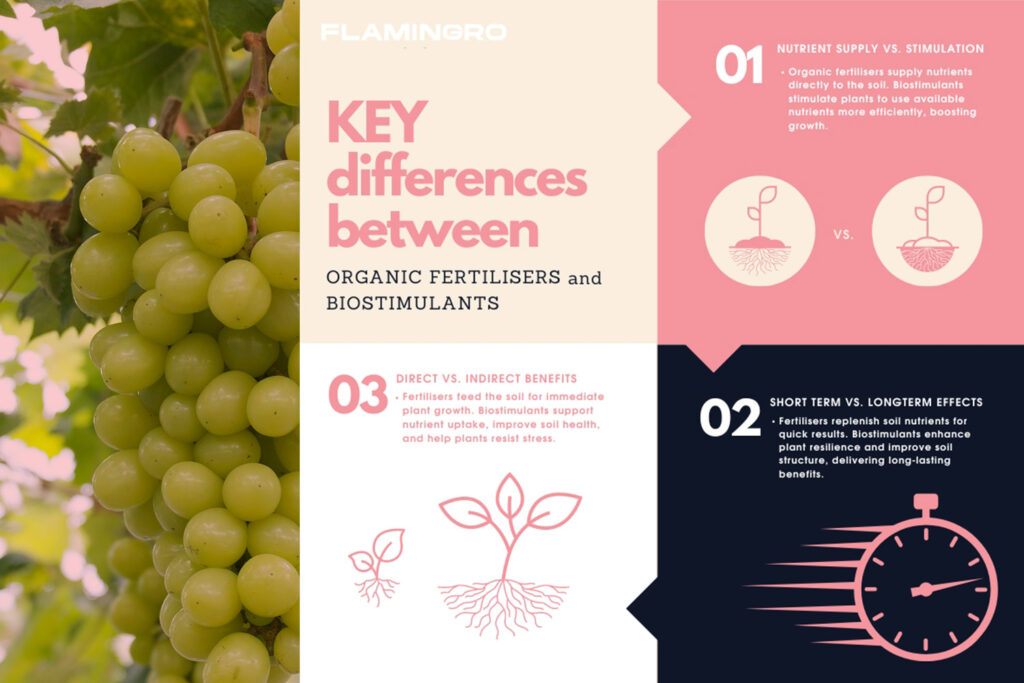
In New Zealand, for example, the use of synthetic nitrogen fertilisers has surged sevenfold since 1990, largely driven by the expansion of the dairy industry. This increase contributes to nitrous oxide emissions—one of the most potent greenhouse gases—alongside the pollution of waterways and soil degradation (Greenpeace)(Ministry for the Environment).
In response to these concerns, New Zealand introduced a cap on synthetic nitrogen fertiliser use in 2021 to curb pollution and reduce its environmental footprint (Ministry for the Environment)(Taranaki Regional Council).
Similarly, Australia faces mounting pressure to adopt sustainable alternatives as chemical fertilisers continue to contribute to greenhouse gas emissions and biodiversity loss (grain.org).
As these concerns grow, many farmers are turning to more sustainable solutions, such as organic fertilisers and biostimulants, to promote soil health and plant growth without compromising the environment. Both are essential for promoting healthier crops, but they work in very different ways.
So, what is the difference between organic fertilisers and biostimulants, and how can you use them together for maximum benefit?
Organic fertilisers are natural products that provide essential nutrients like nitrogen, phosphorus, and potassium to your plants and soil. They play a vital role in improving soil fertility, replenishing nutrients that crops deplete over time. Common examples include compost, manure, bone meal, and plant-based fertilisers. These natural fertilisers are known for their slow release, ensuring your plants get a steady supply of nutrients over time, which results in healthier, more productive crops.
While organic fertilisers feed the soil, biostimulants help plants make better use of those nutrients. Biostimulants, like Flamingro™, are organic products that enhance the physiological processes of plants. They don’t add nutrients directly but improve the efficiency of nutrient uptake, boost plant resilience to stress, and stimulate plant growth. Biostimulants are especially useful for increasing root health and promoting stronger, healthier plants overall.
Biostimulants help plants grow by:
Understanding the differences between these two natural solutions can help you decide which to use in your farming or gardening:
The good news is, you don’t have to choose between organic fertilisers and biostimulants—they work best when used hand in hand. Organic fertilisers improve soil nutrient levels, while biostimulants, like Flamingro™, help plants absorb those nutrients more effectively. Together, they create a natural solution for boosting plant and crop growth without the need for harsh chemicals.
For example, Flamingro™ has been proven to increase clover root mass and shoot growth by 26% in New Zealand university trials. By using Flamingro™ alongside organic fertilisers, you can maximise your soil’s potential while ensuring your plants remain healthy and productive year after year.
Flamingro™ is a certified organic biostimulant that’s ideal for working alongside organic fertilisers. Backed by over 30 years of research, Flamingro™ improves soil health and promotes stronger root systems, helping your crops thrive even in challenging conditions. It’s particularly effective at fighting off soil parasites like nematodes, which can damage plant roots and inhibit growth.
With Flamingro™, you get:
When it comes to improving soil health and boosting plant growth, there’s no need to choose between organic fertilisers and biostimulants—they’re most effective when used together. Organic fertilisers provide the essential nutrients plants need, while biostimulants like Flamingro™ enhance nutrient absorption, promote root health, and strengthen plants against stress.
For naturally healthier plants and more productive crops, consider using both organic fertilisers and biostimulants. By combining these two powerful tools, you can create a more sustainable, eco-friendly approach to farming and gardening that benefits both your soil and your crops.